Please note that some of the links below are affiliate links. This means that, at no additional cost to you, I will earn a small commission if you click through and make a purchase.
- All
- Gallery Item
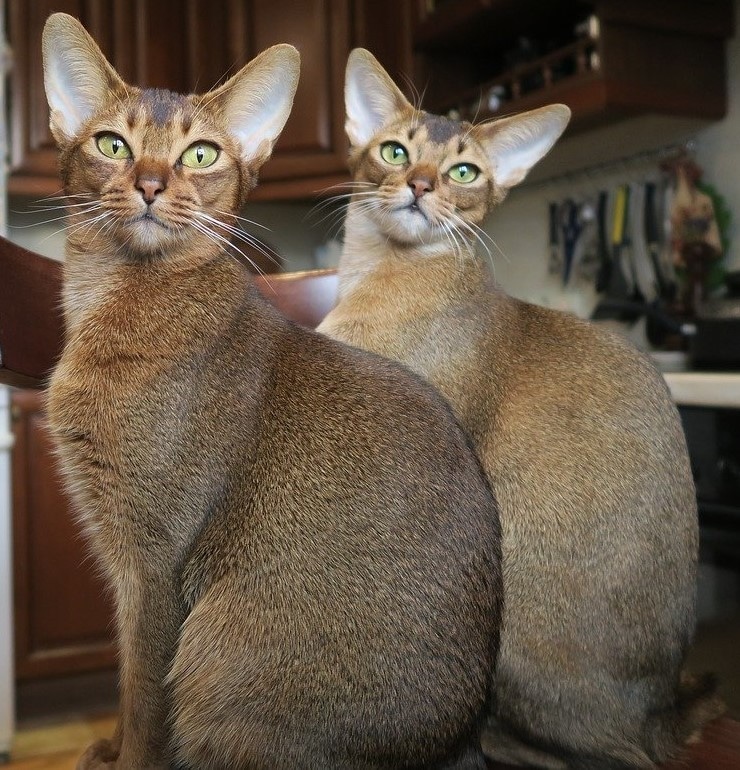
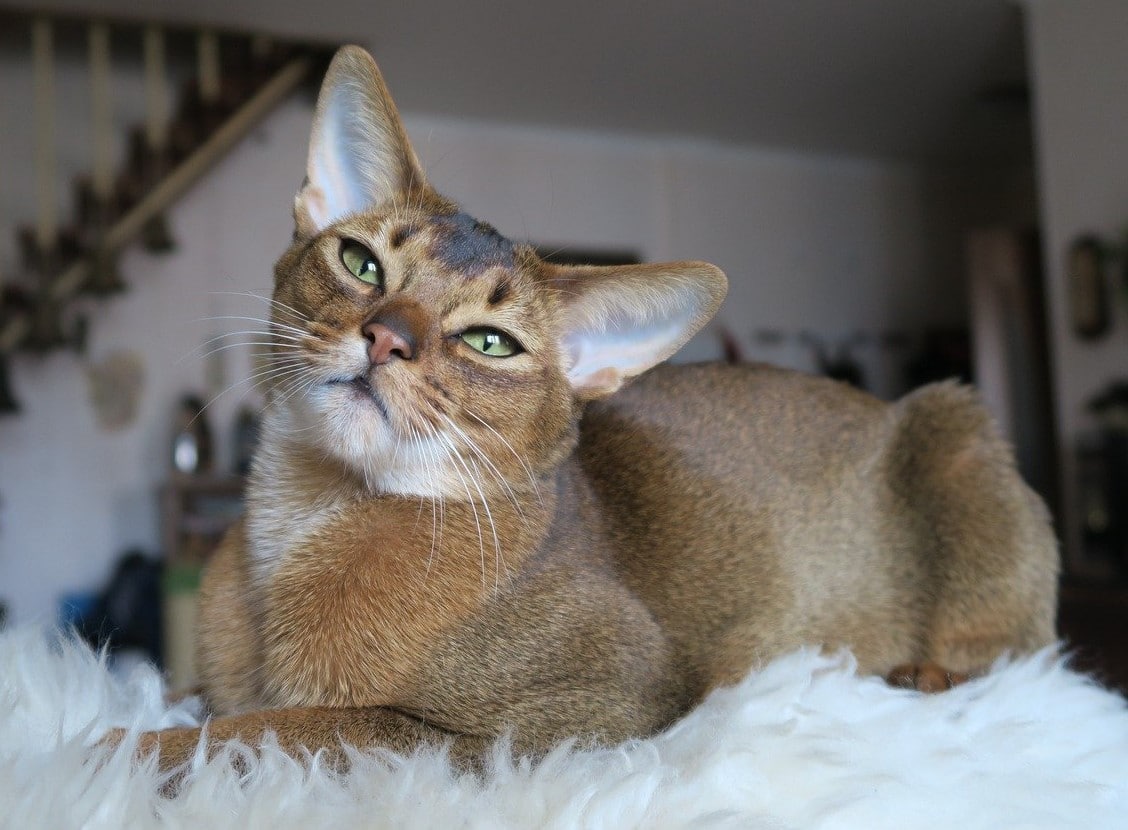
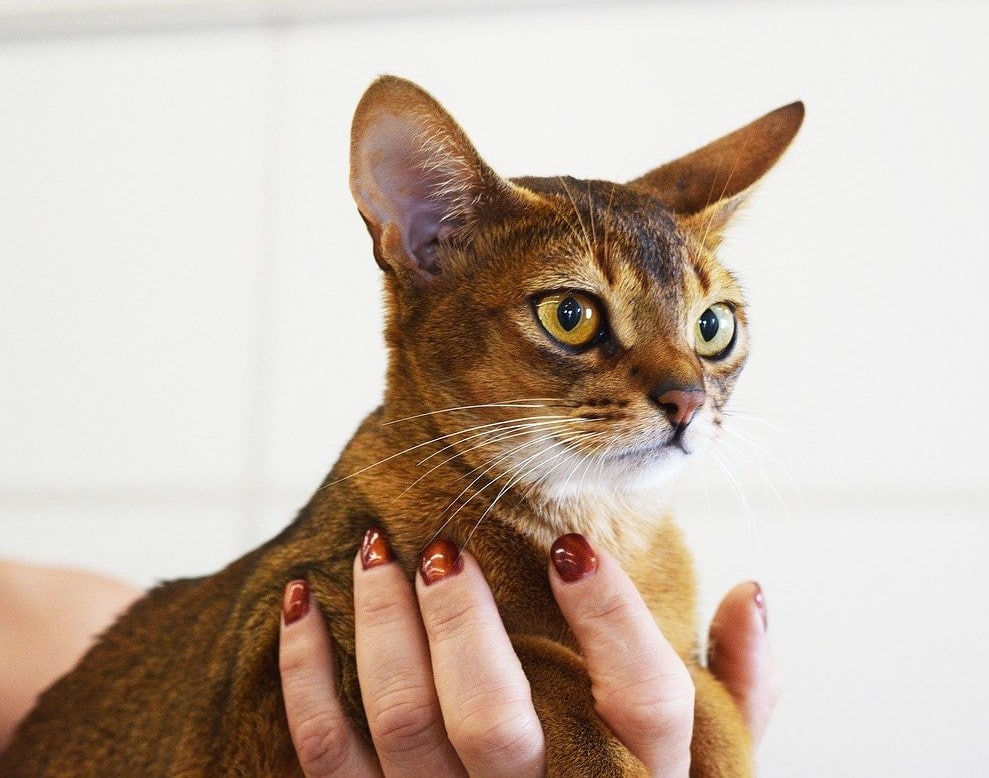
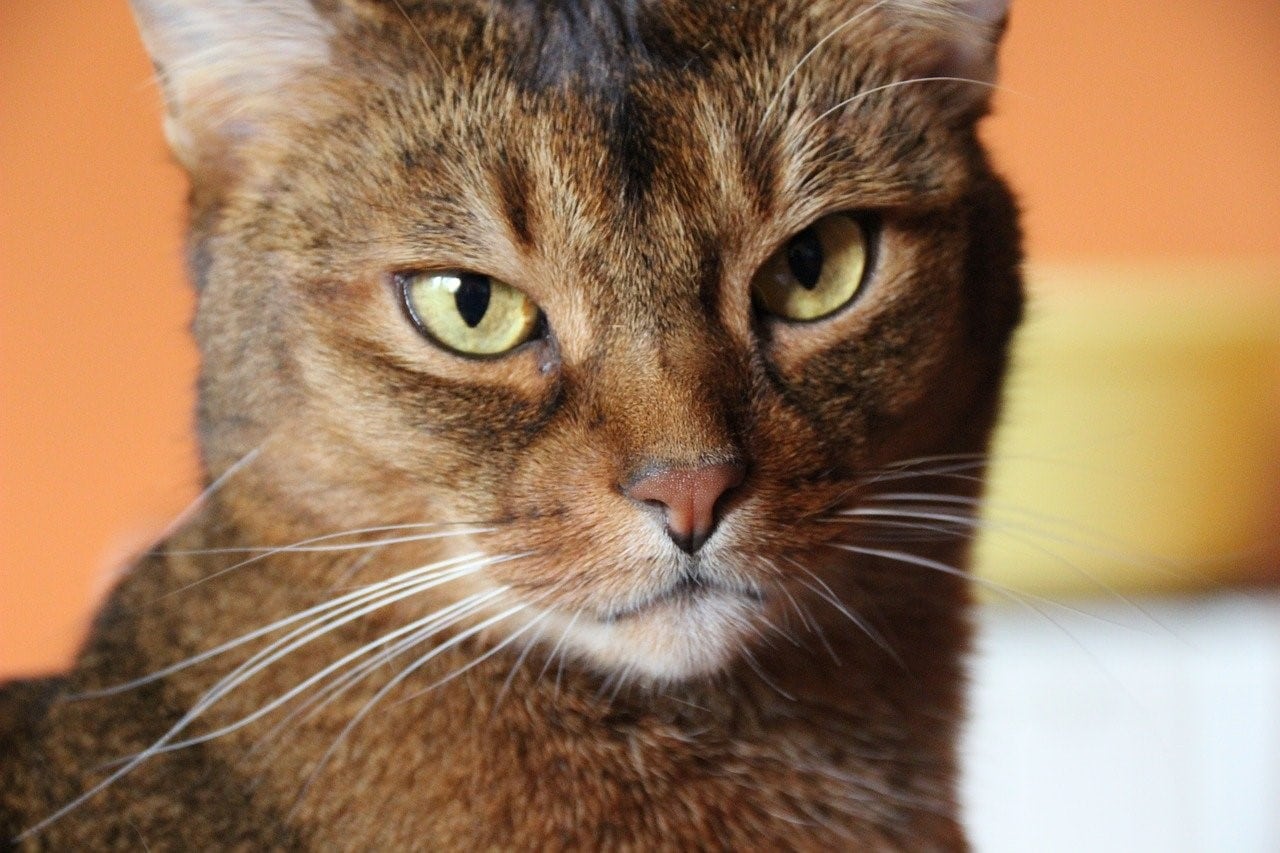
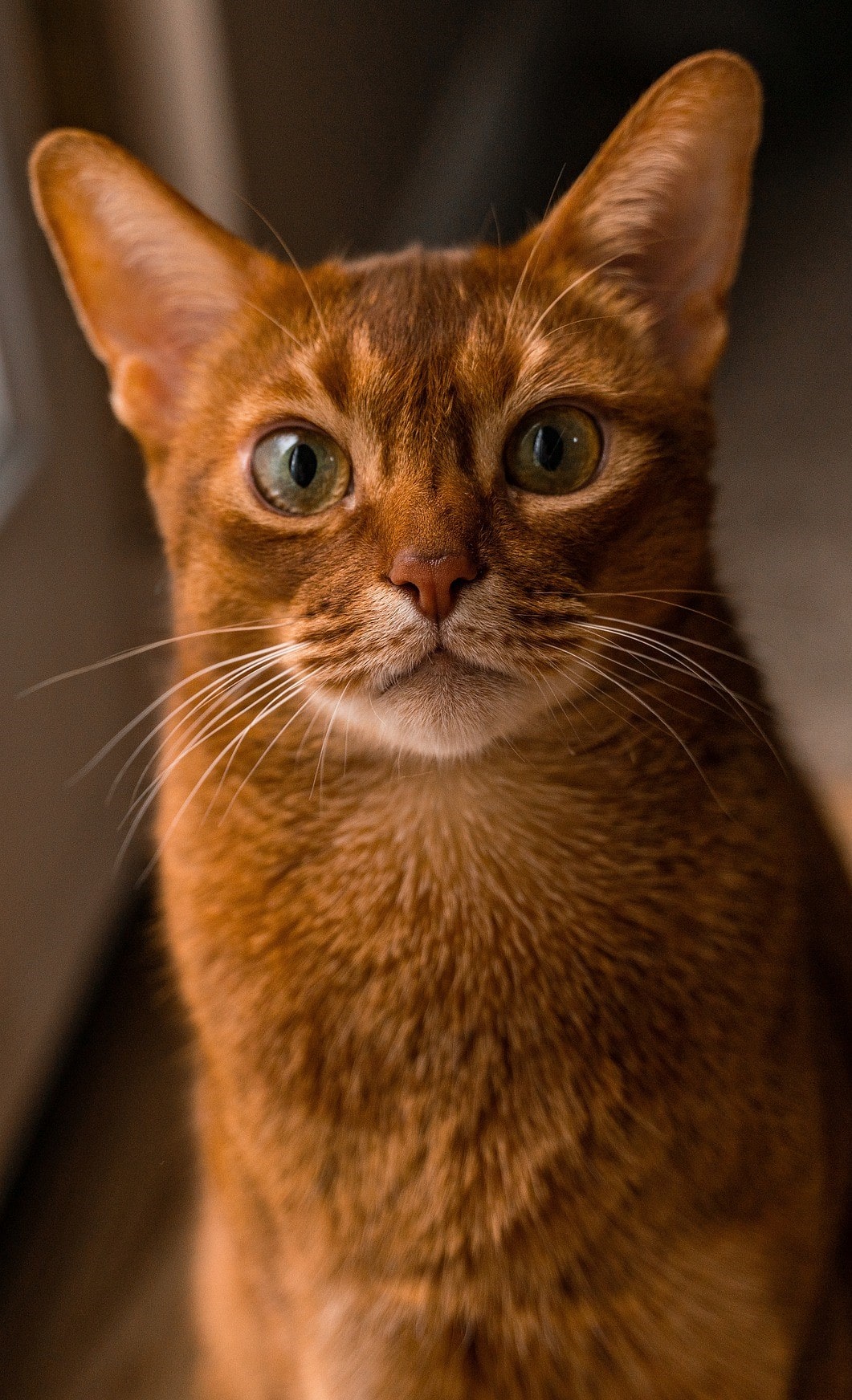
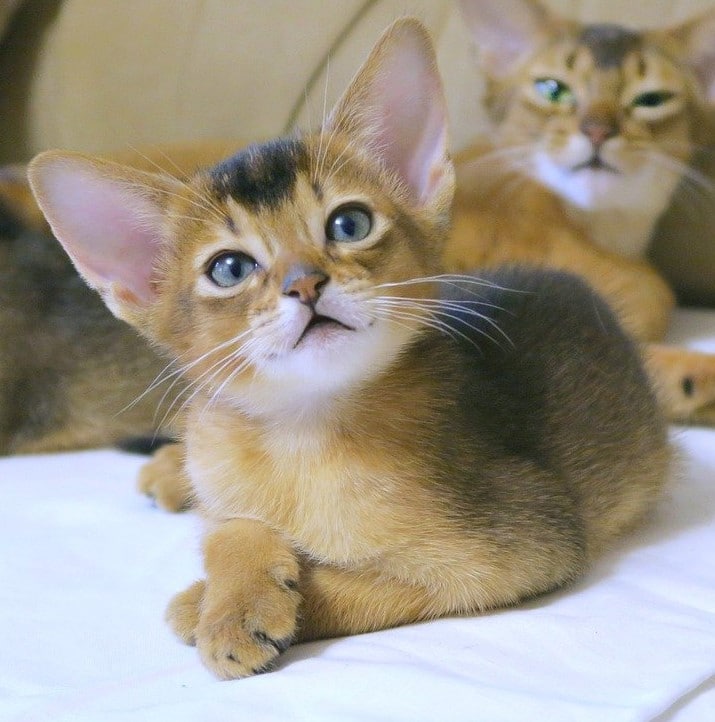
The Abyssinian cat is a friendly, loving, and affectionate cat that enjoys spending quality time with family and other pets. CFA breed standards describe the “ideal” Abyssinian cat as a breed with a “distinctly ticked” coat that gives this cat its regal appearance.
The Abyssinian is also known by other descriptive names such as Abys and bunny cats, and is said to closely resemble the cats of old, as depicted in sacred scrolls and on tomb walls in Egypt. It is thought that this is why Abyssinian cats are considered to be of Egyptian descent, and are often referred to as “one of the oldest breeds”, however their cat history begins around the same time as most popular cat breeds of today: at the Crystal Palace in 1871.
The History of the Abyssinian Cat in the USA
It is uncertain where the Abyssinian cat originated from although the breed is well-documented in Harrison Weir’s 1889 “Standard of Points”, and again in Frances Simpson’s 1903 editorial “The Book Of The Cat”. Both Weir and Simpson are credited with establishing breed standards and popularizing cat shows (as we know them today) for many pedigreed breeds, as well as for creating those breeds themselves!
Britain and India’s colonial history is well-known and documented. Trade and industry back in those days was a lively, messy affair conducted by long and arduous sea voyages or cross-country treks that carried on for months at a time. And as people discovered more and more of the planet, the greater the choice of goods or services to choose from grew.
In all parts of the world, cats (and many other animals) were traded and shared, often given as gifts, and even abandoned at any given port of call. Along the way, many people took a fancy to the look of some of these cats, adopted them, and created new breeds from the foreign or exotic cats found.
Back in the early 1830s, colonists and conquerors alike kept domestic cats on-board their ships to manage the influx of mice and rats at the docks of ports of call. Not one for being much of an indoor kind of animal, these cats are likely to have even left the ships themselves, in search of a better meal.
In the mid-1830s, the Leiden Zoological Museum in the Netherlands were gifted a stuffed cat that very closely resembled the statues and artifacts acquired from Egypt, leading some to speculate that the cat was Egyptian in origin, and possibly accounting for the cats’ descriptive impressions of royalty.
There is little-to-no mention of the Abyssinian cat until 1868, when a British soldier who had fought in Abyssinia (now Ethiopia, in Africa) returned home with a cat named Zula.
Zula’s first public appearance was at the second national cat show held at the Crystal Palace in December 1871, where Zula was placed third.
Another book featuring the Abyssinian cat is Harrison Weir’s 1889 Our Cats And All About Them. In the same year, the Abyssinian cat was denied as a breed by Weir himself, although he had previously described the breed as a “new variety” back in 1882.
Louis Wain, a prolific artist at the time who was known for his artistic renderings of cats with big eyes, agreed with Weir that the Abyssinian cat was not a new breed, but rather, that it closely resembled many other chance-born and known recessive-gene kittens born at the time, commonly referred to as British Ticks. Wain is also known to have been fond of the breed.
Weir (1989) goes on to discuss the Abyssinian in his book, where a cross between an English wildcat and a domestic cat had resulted in ticked kittens that bore a striking resemblance to the imported Abyssinian cats at that time. Weir then goes on to declare that cats from Abyssinia are the original cats that were worshipped in Egypt many centuries before – thus perhaps becoming the originator of the Egyptian theory of the Abyssinian cat’s origins.
Between 1890 and the 1920s, Abyssinian cats were often exhibited as crosses between Persian and Abyssinian cats, resulting in Silver Abyssinian cats which the English judges did not approve of, nor encourage.
Even though British judges didn’t like them, Silver Abyssinians (also called Aluminum and Quicksilver) were bred by Mrs. Carew Cox early in the 1900s. Cox exported her cats to America, to establish the Silver Abyssinian breed in the US. The breed was not received well by the US, either.
The first recorded Abyssinian cats (according to modern breeding standards) in the US in 1907 were owned by Jane Cathcart of New Jersey. It wasn’t until 1909 that the US recognized the Abyssinian breed at the first cat show held in Boston.
CFA records include an Abyssinian cat born in 1914, and the Boston Cat Club show listings for 1920 include a classification for Abyssinian cats.
H.C. Brookes – a noted cat fancier and importer of exotic breeds – created a pamphlet for The Abyssinian Cat Club in April of 1929 and often refers to the breeds’ colorings and markings as simply Ticks, British Ticks, or Bunny Cats.’ Brookes also noted that the Abyssinian cat was a weak breed that barely survived past birth.
The Abyssinian disappeared from history in the US until the early 1930s, a few years after H.C. Brookes fell ill and died while travelling. In 1934, a pair of British Abyssinians were imported and in 1938, the American Abyssinian cat’s breed line was further strengthened by the introduction of a British Abyssinian named Ras Seyam.
Did You Know?
WWII almost eradicated the Abyssinian from American cat history, and in 1947 The Abyssinian Cat Club (which had disbanded and lost many supporters and members during the war) resumed. While records before the war were spotty at best, detailed records and breed standards, along with lineage and other useful facts, were well-documented post the war.
In 1957, an Ethiopian cat was born to a family from Massachusetts, who exported the cat back home with them when they returned to the US.
In 1965, a long-haired Abyssinian cat was displayed in Australia. The long-haired breed had never been fully recognized, and litters of long-haired Abyssinian kittens were often destroyed.
Recognition of the Long-Haired Abyssinian cat
In the early 1970s, the CFA classified Silver Abyssinians as “Albino Abyssinians”. Long-haired Abys began showing up in Canada in the late 1970s and were named “Somali” cats. The long-haired gene was traced back to 1952 in New York, and linked to the same bloodline as the Somali/Abyssinian cat reported in Canada.
This Canadian long-haired cat was traced back to a short-haired Abyssinian born in 1947. Genetic testing rules out crossbreeding with Persian cats to breed in the longer coats, further reinforcing the theory that the longhair gene is a recessive gene. It is however thought that the long-haired Silver Abyssinians were cross-bred as experiments with “Bunny cats” (ticked British shorthairs) and Chinchilla Persians, and that this could be the origins of the recessive gene in long-haired Abyssinians (or Somalis).
Recognized Breeding Standards For the Abyssinian Cat
It is interesting to note that the CFA breed standards classify Somalis and Abyssinians in two distinct categories, while Tica classifies both breeds as one.
The personality of the Abyssinian cat
The Abyssinian cat is a quiet, loving, playful and caring cat that enjoys family time and gets along with everyone – including kids. The Abyssinian is a smart and intelligent cat that can “fetch” – if you can keep up!
Reportedly fast, the Abyssinian cat prefers spending time socializing with other pets and ironically prefers this to spending time with its humans. An energetic ball of fur, the Abyssinian cat is very energetic, always climbing up things to reach higher places.
A quiet, soft-spoken cat, the Abyssinian nevertheless is quite a vocal cat, especially if you’re one of his favorite humans!
Physical characteristics of the Abyssinian cat
Showing muscular strength (but without the coarseness), the Aby stands at an average height of between 8 – 10 in, with a body length of between 12 – 16 in (from nose to tip-of-tail). According to standards, the Aby should weigh between 8 – 12 lb.
Abyssinian cats have an average lifespan of 9-13 years or more and are considered to be medium-sized, short-haired cats with slender, graceful bodies.
Caring for the Abyssinian cat
A regular wellness check every 6-12 months should include a comprehensive analysis of your pet’s health. Your veterinary specialist will be able to answer any questions you may have about your cat’s health and well-being, including:
- behavior and activity
- schedules
- dental health
- ear or eye problems
- fitness and exercise
- nutrition and diet
- pest control
- vaccinations
Grooming
TOP TIP
An Abyssinian’s coat should be left to dry naturally after a bath. Claws can be trimmed once or twice a month (as needed).
You should begin brushing your Abyssinian cat’s teeth when you switch from kitten food to adult food. Be sure to keep your Abys vaccinations, deworming, pest control, and checkups on a regular basis to ensure optimal health and longevity.
Feeding The Abyssinian Cat
Considered a domestic breed, Abyssinian cats do not require a breed-specific diet, although their needs are somewhat heavier than most due to their size and very high activity levels. This includes feeding them smaller portions more often per day to keep up with their kilojoule requirements.
Be sure to have loads of space available for your Aby cat; like most large and active pets, the Abyssinian is likely to get lazy and pick up health problems if he doesn’t get enough exercise, especially if you’re feeding more frequently or feeding on demand.
Common diseases of the Abyssinian cat
Lorem ipsum dolor sit amet, consectetur adipiscing elit. Ut elit tellus, luctus nec ullamcorper mattis, pulvinar dapibus leo.
Five quick facts about the Abyssinian cat
Add Your Heading Text Here
Lorem ipsum dolor sit amet, consectetur adipiscing elit. Ut elit tellus, luctus nec ullamcorper mattis, pulvinar dapibus leo.
Add Your Heading Text Here
Lorem ipsum dolor sit amet, consectetur adipiscing elit. Ut elit tellus, luctus nec ullamcorper mattis, pulvinar dapibus leo.
Add Your Heading Text Here
Lorem ipsum dolor sit amet, consectetur adipiscing elit. Ut elit tellus, luctus nec ullamcorper mattis, pulvinar dapibus leo.
Add Your Heading Text Here
Lorem ipsum dolor sit amet, consectetur adipiscing elit. Ut elit tellus, luctus nec ullamcorper mattis, pulvinar dapibus leo.
Add Your Heading Text Here
Lorem ipsum dolor sit amet, consectetur adipiscing elit. Ut elit tellus, luctus nec ullamcorper mattis, pulvinar dapibus leo.
Sources
- Prestige Animal Hospital. American Shorthair: More than just a Common Housecat. Retrieved November 1 2020 from https://www.prestigeanimalhospital.com/services/cats/breeds/american-shorthair
